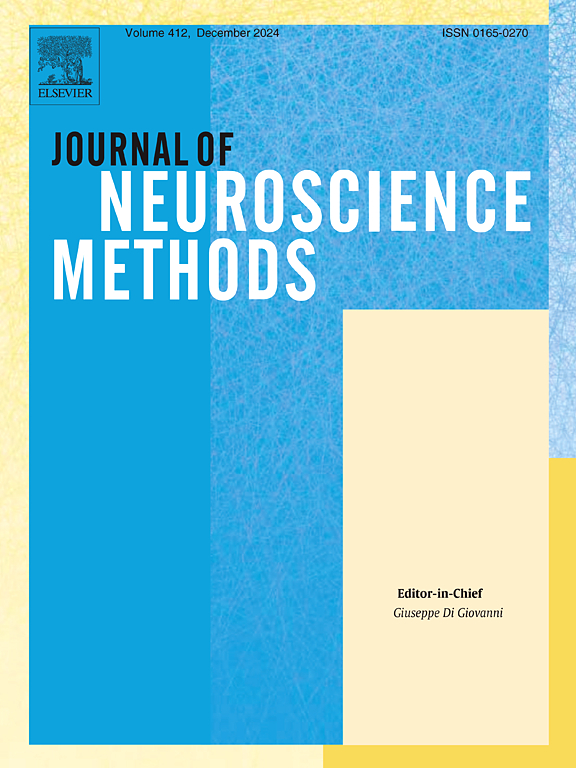微型猪人工耳蜗内耳组织切片技术的发展。
IF 2.7
4区 医学
Q2 BIOCHEMICAL RESEARCH METHODS
引用次数: 0
摘要
背景:耳蜗病理切片是研究内耳结构变化的必要手段。传统的方法如石蜡包埋、冷冻切片和胶体包埋仅限于脱钙组织。对于硬植入体(如人工耳蜗)的耳蜗标本,必须在脱钙和切片前将人工耳蜗分离。这一过程经常破坏耳蜗脆弱的结构,损害病理完整性。因此,需要一种精确而有效的方法来检查人工耳蜗组织。新方法:我们介绍了一种新的病理方法。首先,对耳蜗进行切片和解剖。然后,使用微计算机断层扫描(Micro CT)进行三维成像。正常组织和种植体组织都要经过脱水、包埋和染色以进行组织学分析。结果:该方法可获得厚度均匀的高质量切片,保留了耳蜗结构,保持了精细的结构细节。它还可以在耳蜗内精确定位植入物。与现有方法的比较:我们的方法允许对植入耳蜗进行动态病理变化调查,植入物-组织界面的三维测绘,以及微损伤评估。结论:该方法克服了以往人工耳蜗植入猪内耳组织病理学切片的局限性。它为电极定位验证提供了一个强大的方法,并为评估新电极设计的机械生物相容性提供了一个标准化的框架。摘要:耳蜗病理切片是研究内耳结构变化的关键技术,常规方法包括石蜡包埋、冷冻切片和胶体包埋。然而,这些技术仅适用于脱钙耳蜗组织。从含有刚性植入物(如人工耳蜗)的耳蜗标本中制备组织病理学切片,需要将植入物与耳蜗组织初步分离,然后进行脱钙和随后的切片。这种分离过程经常导致精细的耳蜗结构的机械破坏,从而损害内耳病理结构的完整性。因此,迫切需要开发一种精确而有效的方法来进行人工耳蜗组织的病理检查。鉴于传统方法涉及长时间脱钙,现有技术不足以解决与植入耳蜗标本相关的挑战。为了解决这一限制,我们提出了一种新颖、快速、有效的病理方法。首先,对耳蜗进行切片和解剖,然后使用微型计算机断层扫描(Micro CT)进行三维成像。随后,正常和植入耳蜗组织进行脱水、包埋和染色以进行组织学分析。我们的研究结果表明,这种方法产生了厚度均匀的高质量切片,保留了完整的耳蜗结构,并保持了内耳的精细结构细节。此外,它可以在耳蜗内精确定位植入物。该方法有助于研究植入耳蜗的动态病理变化,三维绘制植入耳蜗与组织界面,以及评估微损伤。它为优化刚性植入物的相容性和推进内耳病理研究提供了一种高效、非破坏性的技术解决方案。本文章由计算机程序翻译,如有差异,请以英文原文为准。
Development of histological sectioning techniques for the cochlear implanted inner ear in miniature swine
Background
Cochlear pathological sectioning is essential for studying inner ear structural changes. Traditional methods like paraffin embedding, frozen sectioning, and collodion embedding are limited to decalcified tissues. For cochlear specimens with rigid implants (e.g., cochlear implants), the implant must be separated before decalcification and sectioning. This process often damages the delicate cochlear architecture, compromising pathological integrity. Thus, there is a need for a precise and efficient method for examining cochlear tissues with implants.
New method
We introduce a novel pathological method. First, the cochlea is sectioned and dissected. Then, micro-computed tomography (Micro CT) is used for three-dimensional imaging. Both normal and implant-bearing tissues undergo dehydration, embedding, and staining for histological analysis.
Results
This method produces high-quality sections with uniform thickness, preserves cochlear architecture, and maintains fine structural details. It also enables precise implant localization within the cochlea.
Comparison with existing methods
Our approach allows for dynamic pathological change investigation, three-dimensional mapping of the implant-tissue interface, and micro-damage assessment in implant-bearing cochleae.
Conclusions
This histopathological sectioning method for cochlear-implanted porcine inner ears overcomes previous limitations. It provides a robust method for electrode positioning verification and a standardized framework for evaluating the mechanical-biocompatibility of new electrode designs.
Summary
Cochlear pathological sectioning serves as a critical technique for investigating structural alterations within the inner ear, with conventional methodologies including paraffin embedding, frozen sectioning, and collodion embedding. These techniques, however, are exclusively applicable to decalcified cochlear tissues. The preparation of histopathological sections from cochlear specimens containing rigid implants, such as cochlear implants, necessitates the preliminary separation of the implant from the cochlear tissue, followed by decalcification and subsequent sectioning. This separation process often results in mechanical disruption of the delicate cochlear architecture, thereby compromising the integrity of the inner ear's pathological structure. Consequently, there is a pressing need to develop a precise and efficient methodology for the pathological examination of cochlear tissues with implants. Given that traditional approaches involve prolonged decalcification, existing techniques are inadequate for addressing the challenges associated with implant-bearing cochlear specimens. To address this limitation, we propose a novel, rapid, and efficient pathological method. Initially, the cochlea is sectioned and dissected, followed by three-dimensional imaging using micro-computed tomography (Micro CT). Subsequently, both normal and implant-bearing cochlear tissues undergo dehydration, embedding, and staining for histological analysis. Our findings demonstrate that this method yields high-quality sections with uniform thickness, preserves the cochlear architecture intact, and maintains the fine structural details of the inner ear. Furthermore, it enables precise localization of the implant within the cochlea. This approach facilitates the investigation of dynamic pathological changes in implant-bearing cochleae, three-dimensional mapping of the implant-tissue interface, and assessment of micro-damage. It offers an efficient and non-destructive technical solution for optimizing the compatibility of rigid implants and advancing the pathological study of the inner ear.
求助全文
通过发布文献求助,成功后即可免费获取论文全文。
去求助
来源期刊

Journal of Neuroscience Methods
医学-神经科学
CiteScore
7.10
自引率
3.30%
发文量
226
审稿时长
52 days
期刊介绍:
The Journal of Neuroscience Methods publishes papers that describe new methods that are specifically for neuroscience research conducted in invertebrates, vertebrates or in man. Major methodological improvements or important refinements of established neuroscience methods are also considered for publication. The Journal''s Scope includes all aspects of contemporary neuroscience research, including anatomical, behavioural, biochemical, cellular, computational, molecular, invasive and non-invasive imaging, optogenetic, and physiological research investigations.
 求助内容:
求助内容: 应助结果提醒方式:
应助结果提醒方式:


